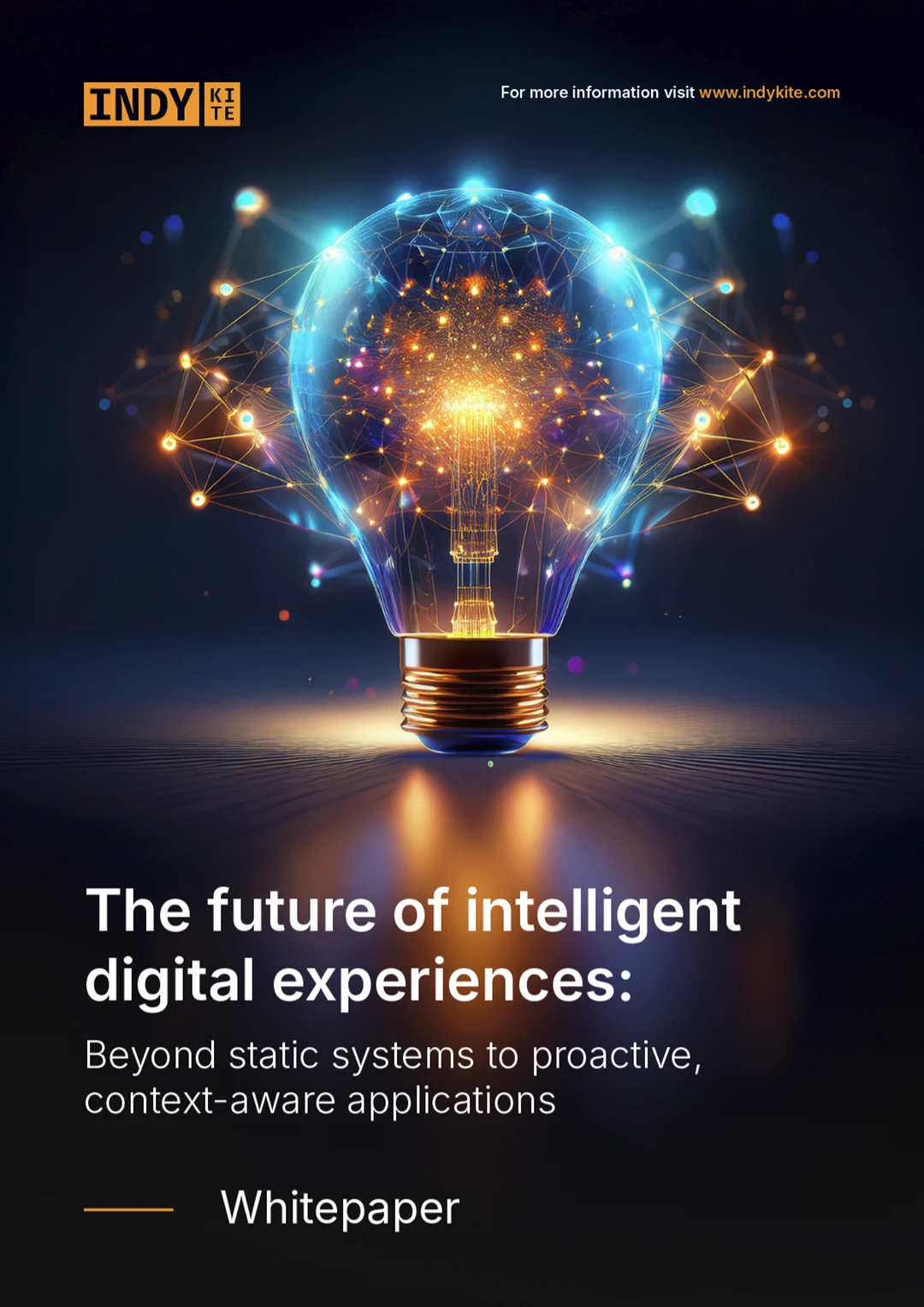The state of enterprise AI security
Across enterprises, AI initiatives are proliferating, yet truly reliable and secure AI deployments remain elusive.
Teams experiment rapidly, executives make bold bets, and expectations soar. But as these projects move beyond the lab, many organizations confront challenges that strategy alone can’t overcome.
At the heart of these challenges are legacy systems and fragmented infrastructure, including disconnected data, siloed environments, and outdated security models that are ill-equipped to keep pace with the speed, scale, and autonomous nature of modern AI systems.
As the pressure to operationalize AI intensifies, foundational gaps will keep many enterprises from crossing the finish line and building effective AI they can trust.
Why enterprise AI security demands a new approach
The security frameworks that have protected enterprise IT environments over the past decade were not designed to handle AI’s dynamic and complex nature. Unlike conventional systems, AI continuously learns from data, adapts its behavior, operates at machine speed, and often acts autonomously, creating a security landscape that is constantly shifting.
Securing AI today requires addressing a broad spectrum of risks that go beyond traditional perimeter defenses. Simply controlling who can access data or systems is no longer enough. Enterprises need end-to-end visibility into the provenance of data feeding AI models, a clear understanding of the context in which data is used, and governance mechanisms capable of enforcing policies dynamically as conditions evolve.
In addition to sanctioned AI deployments, enterprises must also manage unsanctioned or shadow AI—such as unapproved generative AI tools, customer service chatbots, or AI-driven marketing analytics using customer data. Without proper security oversight and protocols, shadow AI can lead to credential theft, data leaks, and exposure of core infrastructure. A June 2025 analysis revealed that nearly 90% of analyzed AI tools had been exposed to data breaches alone.
Many organizations respond to these challenges by imposing blanket bans on AI or severely limiting approved projects. While intended to reduce risk, these measures undermine the innovation potential AI offers and threaten future competitiveness.
Addressing the risk without stifling innovation requires a new approach to security that includes:
- Connected data infrastructure to maintain data quality, provenance, and context, ensuring AI can leverage trusted inputs and well governed data
- Contextual data governance to enable the use of real-time context from across the ecosystem to guide how AI interacts with data.
- Adaptive controls that continuously adjust to evolving AI behaviors and environments, detecting and managing emerging risks proactively
- Strong organizational governance that includes clear policies, training, and awareness programs to mitigate shadow AI risks by educating users, enforcing approval workflows, and fostering a culture of responsible AI use.
Together, these elements form a comprehensive security framework that balances effective risk management with the flexibility needed to foster AI-driven innovation.
The key challenges blocking secure enterprise AI
While this new approach lays the groundwork, enterprises still face critical challenges embedded in legacy systems and fragmented infrastructures. Dealing with these challenges is essential to successfully securing AI at scale.
- Data pipelines lack trust, consistency, and context
Data that fuels AI often flows through fragmented, siloed pipelines lacking comprehensive provenance and quality controls. Without consistent metadata and context, it’s impossible to verify data integrity or ensure appropriate use, opening the door to errors and misuse. - Compliance frameworks are disconnected from operational systems
Policies governing data privacy, consent, and retention are frequently documented but not operationalized. This disconnect means compliance rules rarely translate into enforceable actions within AI systems, increasing legal and regulatory risks. - Access control models can’t support dynamic AI use cases
Traditional access controls manage “who can see what” but fall short when AI systems require nuanced, usage-based permissions that consider purpose, context, and risk in real time. - Software integrations don’t enforce governance or traceability
Enterprise AI environments rely on complex integrations and APIs to move data and insights across platforms. Yet, these connections often lack the mechanisms to enforce governance policies or maintain detailed audit trails, limiting transparency. - Legacy architecture can’t support intelligent, autonomous behavior
Most enterprise systems were designed for static processes, not adaptive AI agents. This mismatch leads to brittle, fragmented infrastructures unable to provide the agility, control, and observability that secure AI demands.
The governance failures we tolerate today will be the lawsuits,brand crises and leadership blacklists of tomorrow.
The Dark Side of AI: Without Restraint, a Perilous Liability, Gartner 2025
How to enable and deliver trusted AI
Building trusted AI starts with an enabling infrastructure that provides visibility, control and transparency.
Enterprises must develop a unified data foundation where every piece of information carries its provenance and context throughout its lifecycle. This clarity allows AI systems to rely on data that is not only complete but also verifiably trustworthy, reducing risks from errors or misuse.
Governance and compliance cannot remain siloed as distant policies; they must be woven into the fabric of data management and AI operations. By embedding these rules directly into workflows and systems, organizations ensure that controls evolve alongside AI, keeping pace with changing environments and regulatory demands.
Traditional security models, focused solely on access, fall short in the face of AI’s dynamic use cases. Enterprises need to implement nuanced, context-driven controls that govern not just who can reach data, but under what circumstances and for what purposes it can be used. This shift enables proactive risk management that aligns with the complex realities of AI-driven decision-making.
Transparency and accountability underpin trust. Organizations must establish visibility across data flows, model decisions, and system activities, providing a clear picture of how AI arrives at its conclusions. Such observability is essential—not only to meet regulatory requirements but to foster confidence among users and stakeholders.
Finally, the technical architecture must be designed to support intelligent, autonomous systems capable of learning and adapting in real time. Unlike legacy infrastructures built for static operations, modern AI demands environments that are flexible, responsive, and secure by design. Only through this evolution can enterprises scale AI confidently, ensuring innovation is matched by responsibility.
To enable and deliver trusted AI, organizations can follow these foundational steps:
- Establish a connected data foundation that preserves provenance, quality, and context throughout the data lifecycle, ensuring AI models receive reliable and well-understood inputs.
- Operationalize governance by embedding compliance and policy controls directly into AI workflows, transforming governance from static rules into dynamic, real-time enforcement.
- Implement granular, context-aware controls that govern data usage based on who is using the data, the purpose, and the conditions surrounding its use.
- Build comprehensive observability and audit capabilities to maintain transparency across AI processes, supporting explainability, accountability, and regulatory compliance.
- Modernize infrastructure to support autonomous, adaptive AI systems, replacing rigid legacy architectures with flexible, secure environments that enable innovation without compromising trust.
By following these steps, enterprises can break down the barriers blocking secure AI adoption and unlock its full potential responsibly.
Building enterprise AI that is both powerful and trustworthy requires more than advanced models—it demands a robust infrastructure designed for the unique challenges of AI. By addressing foundational gaps in data, governance, control, and architecture, organizations can transform AI from a risky experiment into a reliable business asset. The journey to trusted and secure enterprise AI is complex but essential, and with the right approach, enterprises can confidently harness AI’s full potential while safeguarding their data, their customers, and their reputation.















